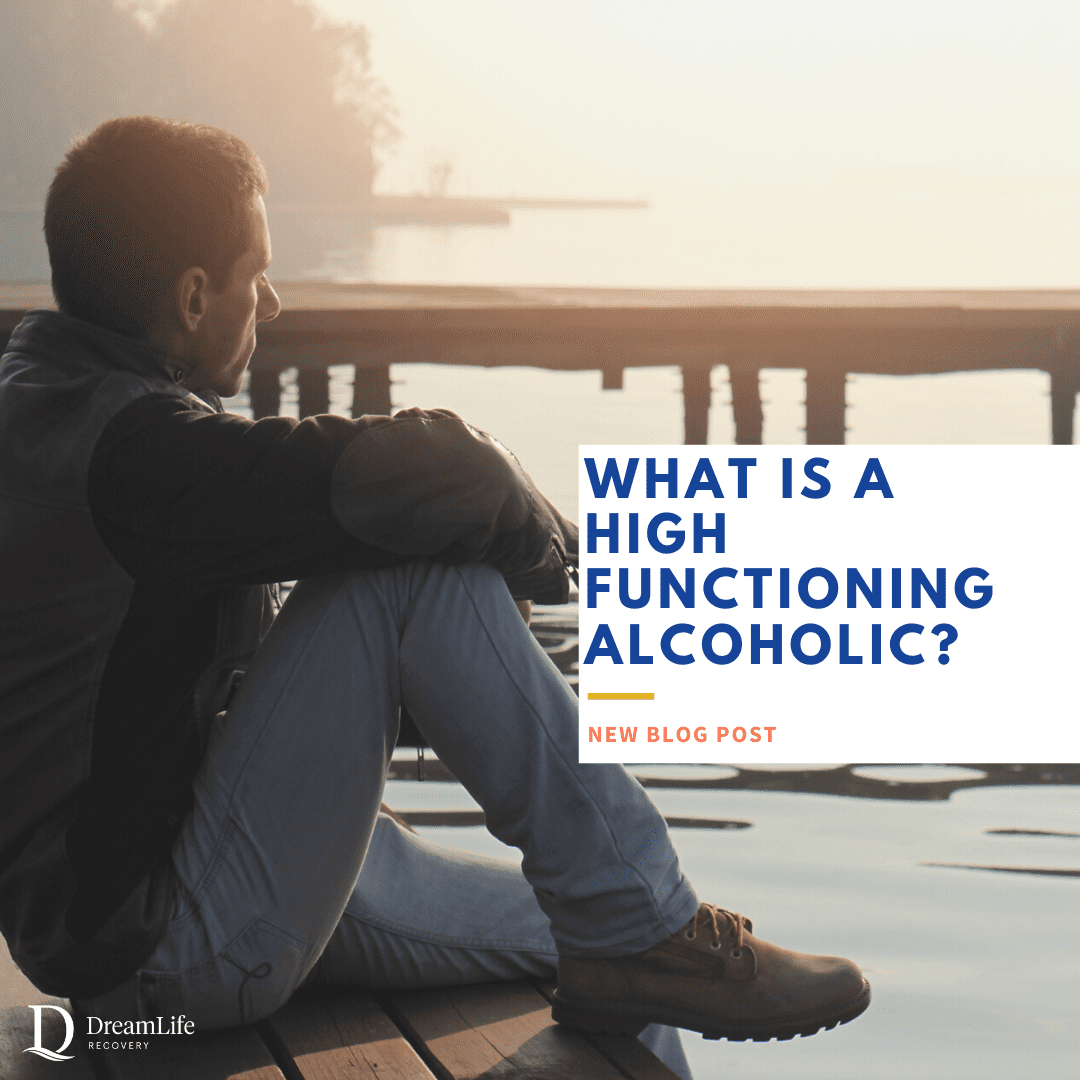What is a High Functioning Alcoholic?


Written By
DreamLife RecoveryWhen you think of someone with alcoholism, you may picture someone who is always falling-down-drunk or whose life is in shambles. While that can be an accurate description sometimes, it isn’t always that obvious.
Do you know someone who appears to have their life together with a great job, a loving family, and nice friends, but they are constantly drinking? While they may not fit into the stereotypical picture of an alcoholic, these types of people are referred to as functional or high-functioning alcoholics. It can be tricky because not everyone who can be described as an alcoholic displays obvious signs. However, sooner or later heavy drinking and day-to-day responsibilities will start to intersect and one will have to suffer.
What is a High-Functioning Alcoholic?
A high-functioning alcoholic is someone who is dependent on alcohol but can still function in society. Their drinking may not overtly affect their professional or personal responsibilities. However, their bodies will feel withdrawal side effects if they discontinue drinking. It’s also possible for these types of alcoholics to avoid blackouts or significant changes in personality when drinking because of the high tolerance that they have built.
It can be easy for high-functioning alcoholics to go unnoticed or fly under the radar because ,to the outside eye, their lives are just like everyone else’s. They may even be extremely successful or a high-achiever in their field.
These types of people may also be in denial because of how seemingly normal their lives are. They may think that just because they can be responsible, productive, hold a job, or raise a family that it means they are not struggling with alcoholism. However, there are common signs that you can look for to determine whether or not someone might be a high-functioning alcoholic.


There is a difference between heavy drinking and alcohol use disorder. Heavy drinking is categorized by more than three drinks a day or seven total a week for women and four or more drinks a day or 14 total for men. While this puts you at high risk of developing an alcohol dependency, it does not necessarily make you an alcoholic.
The signs of alcohol abuse or alcoholism look different for everyone. However, there are some common red flags that you can be aware of, such as:
- Strong urges or cravings to drink alcohol
- Often drinking more than you planned
- Blacking out due to heavy or binge drinking
- Experiencing withdrawal side effects if you don’t drink for an extended period of time
- Making jokes about not being able to control your drinking
- Hiding your drinking from friends and family members
- Neglecting activities that once brought you joy
- Continuing to drink despite it affecting your health or relationships
- Engaging in high-risk behaviors as a result of drinking
- Developing a high tolerance to alcohol
Long-Term Alcoholism Health Consequences
Although alcoholics can build up a tolerance to binge drinking, they may develop a physical dependency on alcohol. This means that if they miss a few hours or a day of drinking, they can suffer alcohol withdrawal syndrome.
Symptoms of withdrawal may include:
- Anxiety
- Confusion
- Depression
- Fatigue
- Irritability
- Mood swings
- Nausea
- Vomiting
- Shaking
- Sweating
- Seizures
- Tremors
Lapse vs. Relapse: What's the Difference?
Find Out MoreIf withdrawal is not treated properly with medically-supervised detoxification, the psychological and physical symptoms can be extremely dangerous and even life-threatening.
Some other long-term consequences of alcohol misuse can include:
- Liver disease
- Heart-related issues including irregular heart beat
- High blood pressure
- Permanent damage of the brain
- Ulcers
- Gastritis
- Cancers including throat, mouth, liver, esophageal
- Stroke
- Vitamin B deficiency
Getting Help
According to the 2018 National Survey on Drug Use and Health, 14.4 million adults aged 18 and over were diagnosed with alcohol use disorder. It is hard to tell how many people out there are high-functioning alcoholics since they tend to not seek treatment.
If you or your loved one are experiencing any common signs and symptoms of alcoholism, including those associated with withdrawal, you should reach out to a medical professional. Don’t know where to start? SAMHSA’s National Helpline, 1-800-662-HELP (4357), is a free and confidential 24/7 service that can provide information as well as local treatment facilities and support groups.
At DreamLife Recovery in Donegal, PA, we have detox and treatment programs that allow you to get sober in a safe and medically-supervised environment. Through our programs, you will be able to understand and address the underlying causes of your drinking. Contact our admissions department today with any questions about alcohol addiction detoxification and residential treatment by calling (844) 402-3592.
Resources:
- Benton, S. (2009). Understanding the High-functioning Alcoholic: Professional Views and Personal Insights. Westport, CT: Greenwood Publishing Group
- “What Is a Functional Alcoholic?” – VeryWellMind, Buddy T., Rev. by John C. Umhau, MD, MPH, CPE; 17 September, 2020
- SAMHSA, Center for Behavioral Health Statistics and Quality. 2019 National Survey on Drug Use and Health. Table 2.17B – Alcohol Use in Lifetime among Persons Aged 12 or Older, by Age Group and Demographic Characteristics: Percentages, 2018 and 2019. https://www.samhsa.gov/data/sites/default/files/reports/rpt29394/NSDUHD…. Accessed December 8, 2020
- Mokdad AH, Marks JS, Stroup DF, Gerberding JL. Actual causes of death in the United States, 2000. JAMA. 2004 Mar 10;291(10):1238-45. doi: 10.1001/jama.291.10.1238. Erratum in: JAMA. 2005 Jan 19;293(3):298. Erratum in: JAMA. 2005 Jan 19;293(3):293-4. PMID: 15010446






